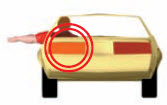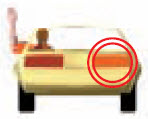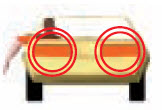Here is a quick guide on California vehicle turn signal laws.
Signaling Laws In California
Always signal when turning left or right, changing lanes, slowing down, or stopping; it lets other drivers, motorcyclists, bicyclists, and pedestrians know your intentions.
Signals may be given by hand-and-arm positions or by using the vehicle’s signal lights. If bright sunlight makes the signal lights hard to see, also use hand-and-arm signals.
| LEFT TURN | RIGHT TURN | SLOW OR STOP |
 |  |  |
Motorcyclists often use hand signals to make themselves more visible. Bicyclists may give right turn-signals with their right arm held straight out, pointing right.
Signal:
- During the last 100 feet before reaching the turning point (left or right turn).
Caution!—Even though you signal, do not automatically assume that the space you want to occupy is clear. - Before every lane change. Check your mirrors, look over your shoulder, and check your blind spot before changing lanes.
- At least five seconds before you change lanes on a freeway.
- Before pulling next to the curb or away from the curb.
- When you change directions.
- Even when you do not see other vehicles. A vehicle you do not see may suddenly appear and hit you.
If you plan to turn beyond an intersection, start signaling when you are in the intersection. If you signal too early, the other driver may think you plan to turn into the intersection and he or she may pull out in front of you.
Remember to cancel your signal after turning.
Steering
Steering Control – Modern vehicles require very little effort to turn. Look at the steering wheel as a clock face and place your hands at 9 and 3 o’clock or slightly lower at around 8 and 4 o’clock. These are the desired hand positions that reduce the possibility of turning the wheel too sharply.
To reduce forearm and hand injuries, your hands should be placed on the lower half of the steering wheel, with your knuckles on the outside of the wheel, and your thumbs stretched along the rim of the steering wheel.
Pull-Push Steering – Use pull-push steering for most turning maneuvers. Pull down with one hand and push up with the other. This results in smooth steering and reduces the potential for over steering, which can lead to loss of control. Keep your hands and thumbs on the outside of the wheel.
Hand-Over-Hand Steering – Use hand-over-hand steering when steering movements are critical, such as when:
- Parking.
- Performing sharp right turns.
- Correcting a skid.
Use quick movements on entry to the maneuver, and then use slow, smooth movements when straightening the wheel.
One-Hand Steering–Use one-hand steering for:
- Backing maneuvers that do not require full left or right turns, or
- When operating vehicle controls for information, safety, or comfort.
